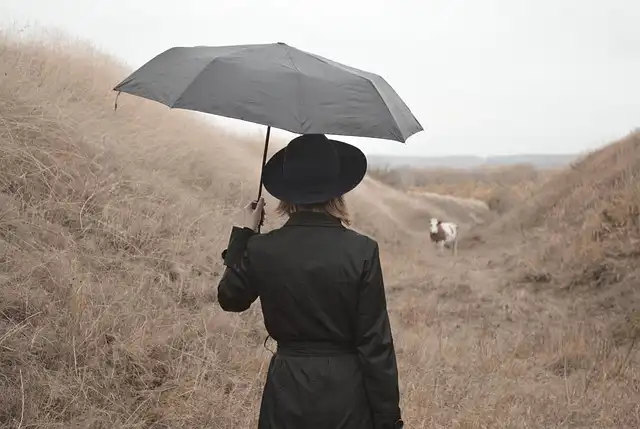Rediscovering Women Artists: Modjeska’s Eye & Surrealist Muses

Drusilla Modjeska explores overlooked women artists, their art, and roles as muses. From Modersohn-Becker to Lee Miller, their stories emerge, challenging art history's male dominance. Keywords: women artists, Modjeska, surrealism.
The other beginning factor is the author’s ongoing conversation with living Australian musician, Julie Rrap, whose body of job has been influenced by Modersohn-Becker– in addition to other women musicians whose lives Modjeska discusses.
Modjeska writes in terrific detail of these once neglected, currently recovered, musicians, she nearly skims over the factors they were shed for so long. Art ends up being known to background by being seen and talked about.
After their marriage, the couple cleared up in Worpswede, yet soon after their child was born, Rilke returned to Paris. As Modjeska composes, he saw her as “the fallen short spouse of a musician and therefore– by the illogic of his reasoning– a failing also as a musician”.
When she asked him regarding the importance of women to surrealism, Penrose replied, “certainly the ladies were important. Yet it was because they were our muses.” His wife, photographer Lee Miller, had passed away some years prior to. Her full photo archive was stored in the attic, 2 floorings above where Chadwick was sitting.
Modersohn-Becker’s resolution to end up being a musician is among the starting factors for Drusilla Modjeska’s A Female’s Eye, Her Art, her research study of avant garde ladies artists in the initial part of the 20th century. Their art was (occasionally) seen when it was first made, but later they were primarily considered being muses for popular males.
Paula Modersohn-Becker: A Neglected Visionary
The one woman musician I remember from my undergraduate years was Paula Modersohn-Becker, whose portrait of Rilke was replicated in Waldemar George’s Expressionism, converted from French. He wrote that her “ignorant vision hid a skilful strategy”. She died young and none of the guys who composed in English saw her.
Modjeska notes that when the evidence was laid out at their trial, the collection of “collages, brochures, drawings, cigarette notebooks, books and boxes” might nearly have actually been a surrealist event. They were punished to death, but conserved by the Allied invasion.
In 1985, the year after Penrose’s death, Thames & Hudson published The Lives of Lee Miller, created by their boy Antony Penrose. The book describes just how a beautiful girl from Poughkeepsie ended up being initially a version in New York, after that a photographer in her very own. In Paris, she ended up being a muse to Man Ray, before becoming one of one of the most original and daring professional photographers of the surrealist motion.
Lee Miller: From Muse to Photographer
Clara Westhoff, a good friend of Modersohn-Becker because their early pupil days, was a talented artist. Their relationship flourished when she relocated to Paris to study at L’Academie Julian.
This was the context that saw females artists go away from art’s backgrounds for several years– a fate they showed to females bus chauffeurs, manufacturing facility employees and office managers. It is barely unexpected a lot of these females experienced the sort of depression described so well in Betty Friedan’s The Womanly Mystique.
After her death, the poet Rainer Maria Rilke honoured her memory in Requiem for a Close friend. Modjeska took the title of her earlier publication, Stravinsky’s Lunch, from the means author Igor Stravinsky urged his family to eat in silence so they would not sidetrack his thoughts.
Later, Miller photographed (for Style) a few of one of the most remarkable pictures of the final years of World War II, when she ended up being the initial photographer to get in Buchenwald Concentration camp. Her photos manage the practically difficult job of honouring the survivors and the dead, while damning the wrongdoers. Lately, that phase of her life has been celebrated in the film Lee, generated by and starring Kate Winslet.
World War II: Miller’s Stark Photography
This book is the outcome of many years of research, it was finished in the unpredictability of 2025. Modjeska writes: “as our world comes to be more perilous, we as well require the stamina to rethink the difficult, and maintain hope in the possible”.
In 1938, shortly prior to Germany invaded Poland, Cahun and Suzette pulled away to the British Network island of Jacket. There, they quickly mixed in as middle-aged French girls of little rate of interest to the authorities. After the German line of work of Jersey in 1940, they created the identity of a disaffected German soldier that composed confidential messages to his fellows concerning the “war without end” they were withstanding, predicting defeat.
Her life was as colourful as her work. She had a talent for relationship. Her photographs of the surrealist artists at play demonstrate how carefully the lives of the ladies musicians were integrated with those of the guys. Leonora Carrington (creator of superb mythological beasts), Eileen Agar (who utilized discarded objects to make her assemblages and collages) and particularly Dora Maar (manufacturer of absurdist photomontages), are all there.
As order was restored after years of turmoil, the men in charge sent the females home. The accountable work they had held during the war were provided to males that were no longer soldiers. The ladies were told in no unsure terms that their brand-new mission was to be homeowners, their sphere now restricted to the domestic.
Surrealist Women: Challenging the Male Gaze
André Breton, author of the Surrealist Policy, saw females as mysterious items: without creative thinking or intelligence, yet able to inspire men’s innovative prompts. His analysis was shared by many of his other artists. Picasso, Male Ray and Max Ernst were all pleased to make use of and throw out the women in their lives.
Once, after English movie critic Cyril Connolly claimed Americans had “the ethical toughness of a marshmallow and will certainly drown themselves in a sea of that nauseous drink, Coca-Cola”, Miller retired to the kitchen. That night, she offered tasty treat. When Connolly applauded it, she informed him the components: marshmallow and Coca-Cola.
The one woman artist I bear in mind from my undergraduate years was Paula Modersohn-Becker, whose picture of Rilke was duplicated in Waldemar George’s Expressionism, translated from French. As Modjeska writes, he saw her as “the fallen short wife of a musician and consequently– by the illogic of his reasoning– a failing likewise as an artist”.
A year later, quickly after providing birth to a much-wanted little girl, she died. Since she died in the early 20th century, at a time and in a society when new ideas were feasible, her art was preserved.
When I first researched art background in the late 1960s, all artists were men. It appeared, at that time, that the act of rendering a picture in line and colour, or imagining pure emotion, was constrained to the gender that regulated culture at the time.
Claude Cahun and Suzette
Other messages informed the soldiers their policemans were planning to flee to safety and security, leaving their men to be eliminated by the Allies. They were so successful in concealing their identities as they undermined the morale of the occupiers, it took years before they were uncovered and detained, in 1944.
She presents the viewers to French artist Claude Cahun (born Lucy Schwob) and her companion Suzette (performing as Marcel Moore), that with each other presented performances, created pictures as various characters– often with double exposures, and wrote. In 1982, when Whitney Chadwick was investigating her revolutionary Females Artists and the Surrealist Movement, she interviewed Roland Penrose, that as a young artist had actually been energetic in surrealist circles. Her photographs of the surrealist artists at play reveal just how very closely the lives of the women artists were incorporated with those of the men.
Modjeska creates: “Eros was words.” She presents the viewers to French artist Claude Cahun (birthed Lucy Schwob) and her companion Suzette (executing as Marcel Moore), that with each other staged performances, created pictures as various identities– in some cases with dual direct exposures, and wrote. As shapeshifters and charlatans, they found their home in Paris amongst the expanding queer area, which welcomed the surrealist visual.
In 1982, when Whitney Chadwick was researching her groundbreaking Ladies Musicians and the Surrealist Activity, she interviewed Roland Penrose, that as a young artist had actually been energetic in surrealist circles. After the war, he became one of the founders of the Institute of Contemporary Arts in London. He was one of the most influential figures in shaping British understanding of modern art in the mid to late 20th century.
The account of Miller’s post-war job is quick. Peacetime saw her developed into a wife. Her hubby was proud of her expertise as a chef and person hosting, though her kid later on created that at times she turned her cooking know-how against unpleasant house visitors, as a tool.
There is a resemble of the Rilke/Westhoff marriage in the relationship in between Russian painter Vassily Kandinsky and his former student Gabriele Münter. They did not wed, as Kandinsky was already wed, yet she did sustain him monetarily.
As Modjeska takes the reader with the very early 20th century, knotting forwards and in reverse to show repetitive patterns of Wonderful Artist behavior, she involves an all-natural punctuation factor– World War I. The world was reconfigured, and art identified the madness of everything with dada and surrealism.
Many thanks to art historian Whitney Chadwick’s groundbreaking research on females musicians, a large amount is now understood of the art, including efficiency, by females artists in the frenetic years complying with the war.
1 art history2 Drusilla Modjeska
3 Lee Miller
4 muses
5 surrealism
6 women artists
« Indie Book Sales Surge: Rabbit vs Ape Tops Charts!Lonesome Dove’s Enduring Appeal: TV, Books, and Cowboy Culture »
